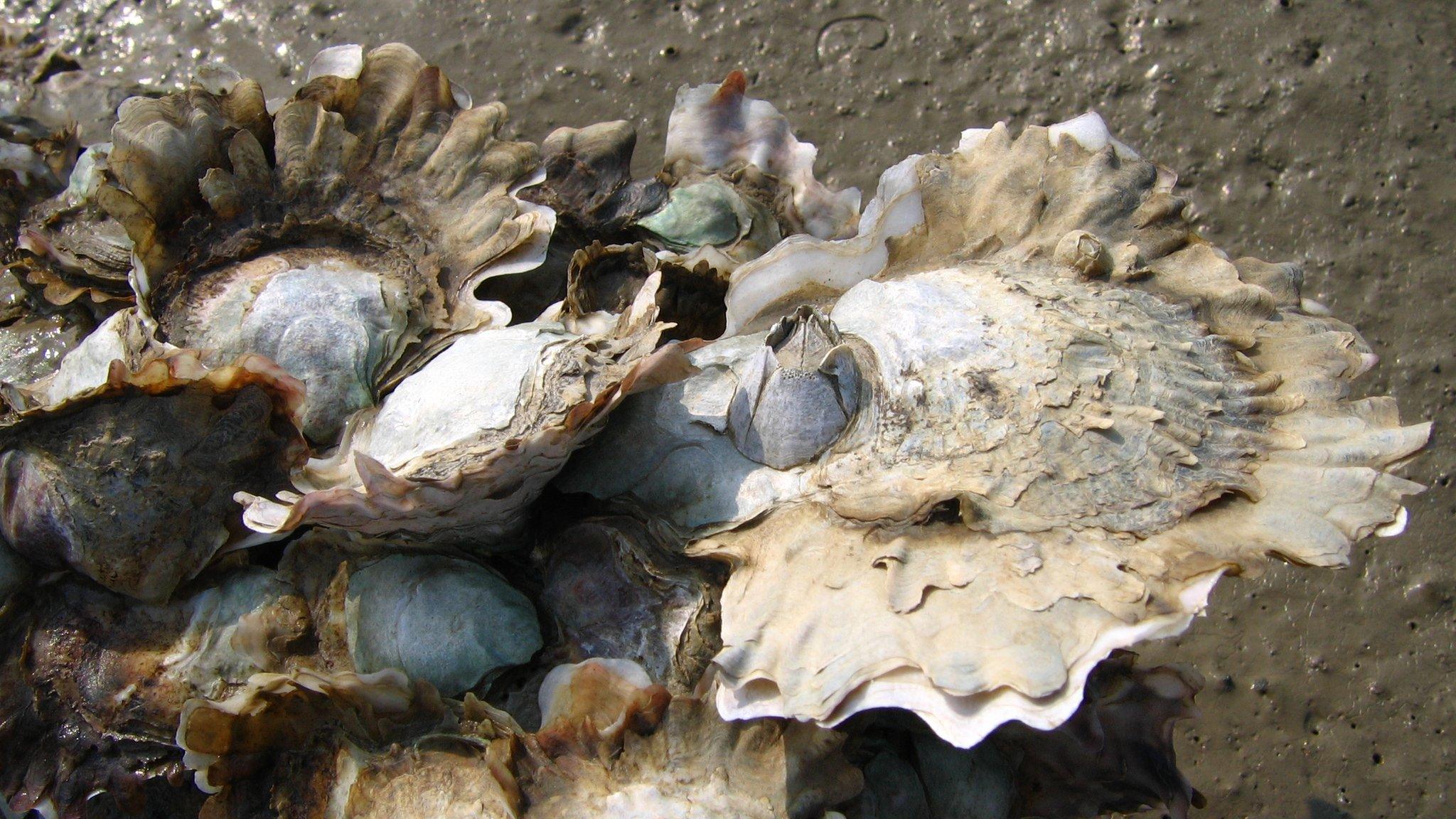Pacific oyster expansion threatens Devon and Cornwall estuaries
- Published
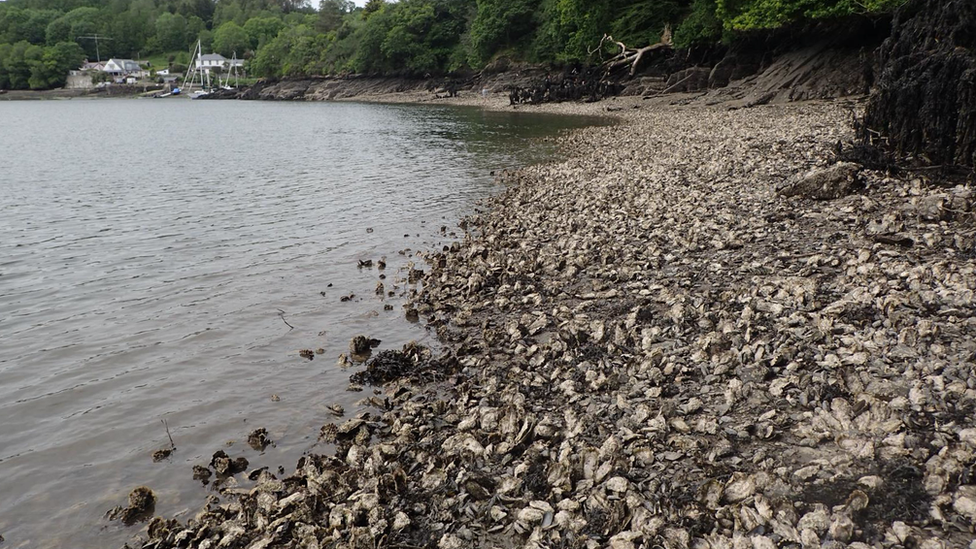
More than 150,000 oysters have been recently culled in a bid to control the species in Devon and Cornwall
A "terrifying" expansion of an invasive oyster is threatening marine ecosystems, conservationists say.
Pacific oysters were brought to the UK from the US and Canada and farmed during the 1960s and 1970s, but now they are damaging protected estuaries.
"The numbers we are seeing now are pretty terrifying," said marine expert Matt Slater.
More than 150,000 oysters have been recently culled in a bid to control the species in Devon and Cornwall.
A government report said further action was needed to control them, external as they were "super-abundant" in some locations.
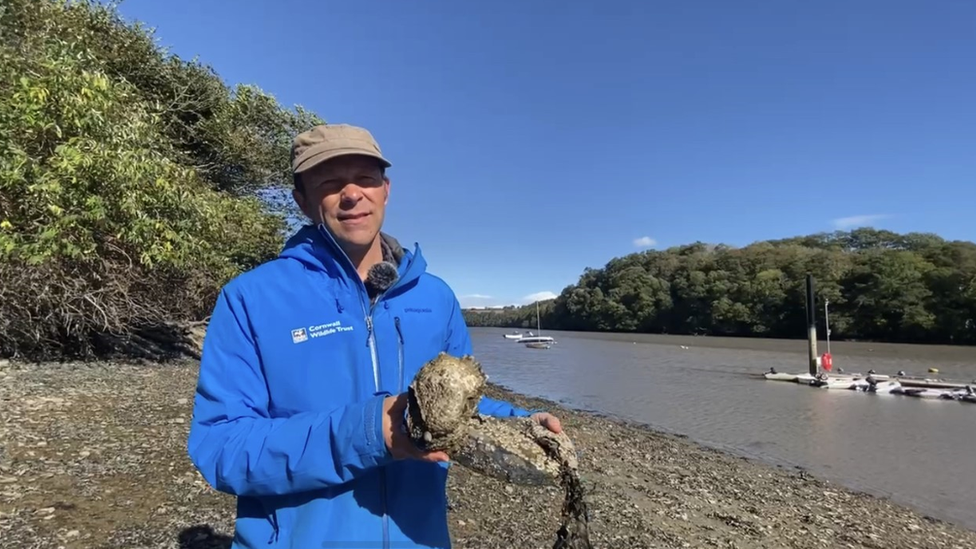
Matt Slater, from Cornwall Wildlife Trust said the population of feral oysters had exploded.
Pacific oysters have been found in every estuary on the south coast of Devon and Cornwall, from Newlyn to Kingsbridge.
"A few years ago there were virtually none in the areas we surveyed and now we're finding thousands of oysters. There are oysters growing on oysters, forming large reefs," Mr Slater, marine awareness officer at Cornwall Wildlife Trust, explained.
"If they're not kept under control we could end up finding deep beds of oysters, metres thick, encrusting harbour sides, slipways and also encroaching on important protected estuarine habitats."
Natural England data showed hotspots such as at Wilcove in Torpoint where up to 396 Pacific oysters were counted per metre square, with a similar number in the Fowey Estuary.
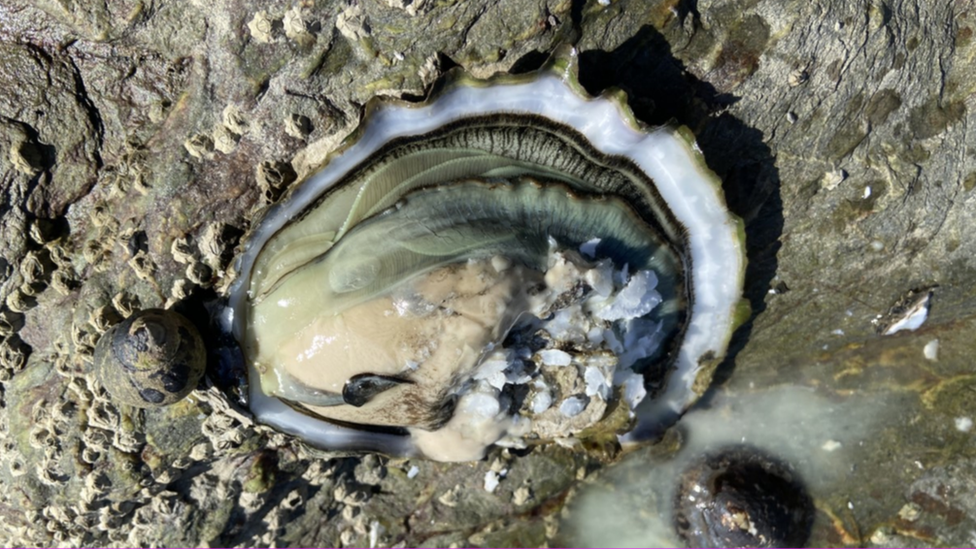
A Pacific oyster near Feock in Cornwall
The report, released in September, said the oysters had injured dogs' paws, burst paddleboards, damaged boats and one woman had needed stitches to her hand and "slashed her arm" when she slipped on an oyster reef.
Mr Slater said: "We have really important mud flats and soft muddy shores that are vital for wading birds as feeding grounds and for fish when the tide covers them.
"The danger of Pacific oysters is they could completely smother those areas so they'd be lost to the native wildlife."
'Population explosion'
The bivalve molluscs grow quickly - in a couple of years they can reach maturity.
Cornwall Wildlife Trust said each oyster could produce up to 200 million larvae a year.
Mr Slater said not all will survive, but if conditions are good you get "a population explosion and that is what we are seeing".
When the oysters were brought to the UK, scientists believed the waters were too inhospitable for the oysters to breed in any numbers.
However, Mr Slater said the warmer waters, attributed to climate change, have instead created an optimum breeding environment for them.
A project to train citizen scientists to monitor and cull the oysters has been deemed a success by the report.
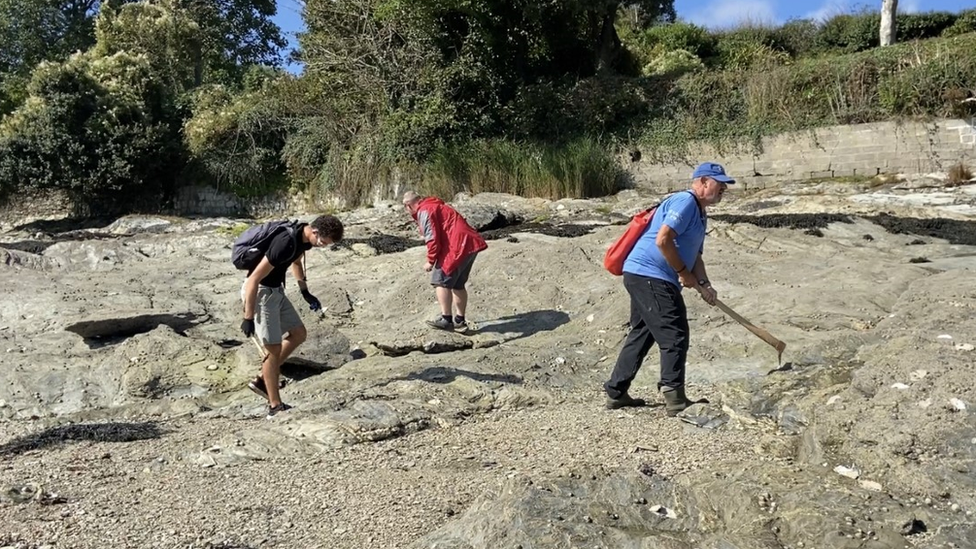
Volunteers manually controlling the Pacific oyster during a survey in Cornwall
Unlike the native oysters, the Pacific oysters attach to rocks and slipways.
To cull them, the volunteers strike the shells with a hammer until it breaks.
"It feels counter intuitive to be going around with hammers... [but] there's 36 invasive species in the marine environment, most of them aren't a problem, but this is one that is," said volunteer Chris Sharpe.
The report acknowledged that it might be seen as "cruel" and that some volunteers had received negative comments from the public.
Across Cornwall and south Devon, between 2019 and 2020, 16 volunteer groups have been trained, culling a total of 150,387 Pacific oysters.
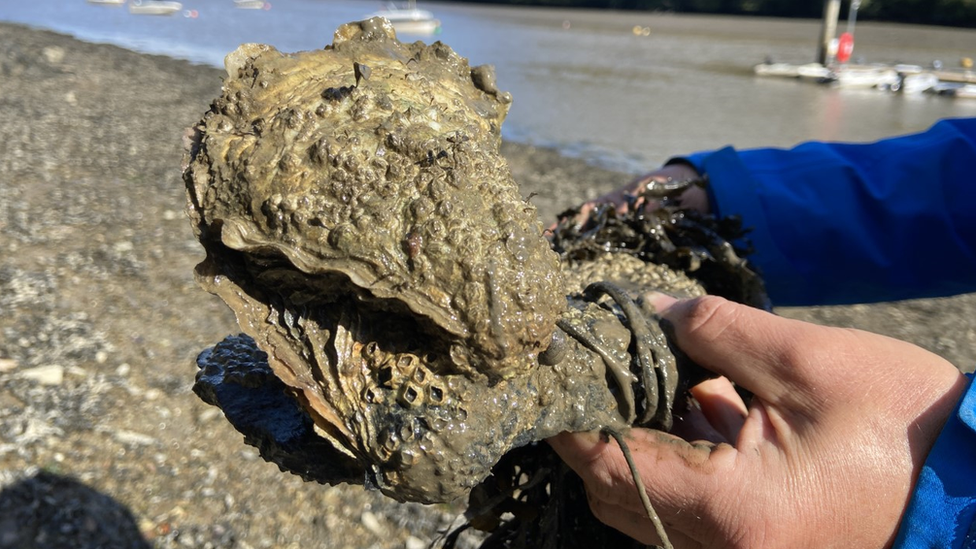
The oysters tend to grow vertically creating what experts say is a hazard to people and animals
These efforts, noted in the report, showed an average population decline of 89% at culled sites.
It concluded that "targeted" culling of the oysters should continue to prevent them taking over marine habitats.

Alternative uses?
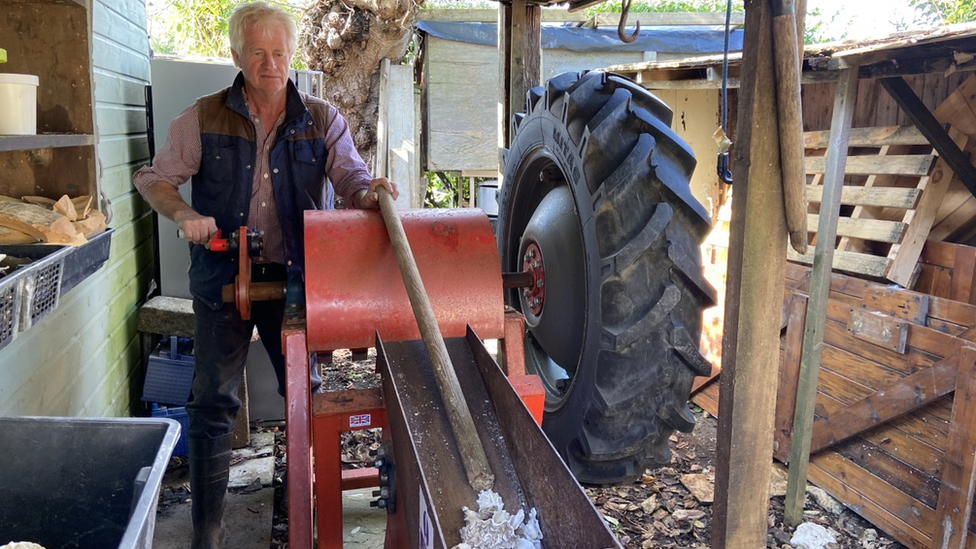
Ewen Abram-Moore crushes empty oyster shells for use as fertiliser on gardens
For the oysters to be fit for human consumption they must be caught in a designated shellfish fishery and then depurated due to the toxins they ingest.
Uses for the shells, include trials in the construction industry for cement, replacement of limestone in neoprene manufacturing and as a garden fertiliser.
Horticulturalist, Ewen Abram-Moore, said: "They're terrific for vegetables, well any plants, but I use them on my vegetable plots."

Follow BBC News South West on Twitter, external, Facebook, external and Instagram, external. Send your story ideas to spotlight@bbc.co.uk, external.
Related topics
- Published25 October 2019

- Published20 September 2012
